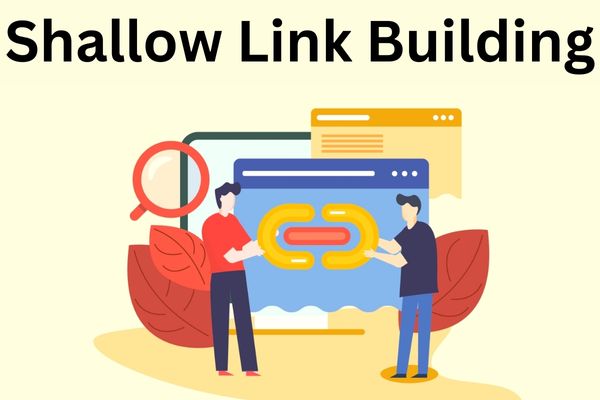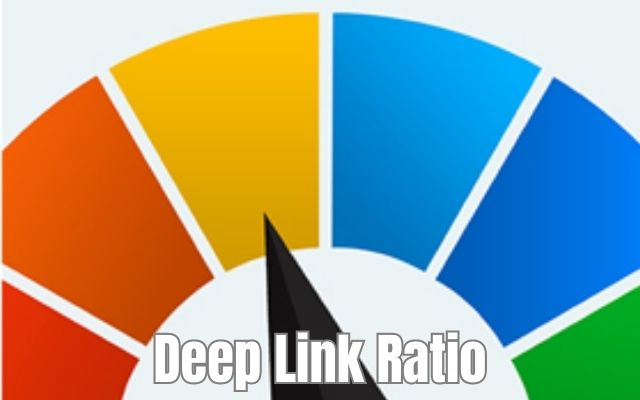Shallow Link Building: Boosting Your Website’s Authority and Visibility

Implementing a strategic shallow link building strategy can significantly improve the overall visibility and authority of your website.
When it comes to link building, deep links to specific pages or blog posts often take the spotlight. However, there’s an underrated link building tactic that you might be neglecting: shallow links. In this article, we’ll explore the concept of shallow links, their benefits, and how to effectively utilize them in your link building strategy to boost your website’s authority and visibility.
Understanding Shallow Links:
Shallow links refer to links that are closer to the homepage or top-level pages of a website, typically pointing to category pages or other important sections. They are different from deep links, which are hyperlinks that lead to specific content pages within a website, such as blog posts or product pages.
The importance of shallow links in link building lies in their ability to enhance site navigation, improve crawlability and indexability for search engines, and strengthen the internal linking structure. By strategically incorporating shallow links, you can provide users with easier access to important sections of your website and help search engine crawlers discover and understand the overall structure and hierarchy of your site.
It also play a role in distributing link equity throughout your website. By linking from top-level pages, you can pass link authority and relevance to deeper pages, improving their visibility in search engine rankings. Additionally, they can contribute to a more coherent and user-friendly browsing experience, as visitors can quickly navigate to relevant sections of interest.
Overall, It contribute to a well-optimized and well-structured website, improving both user experience and search engine optimization efforts. Incorporating shallow links as part of your link building strategy can positively impact your website’s authority, visibility, and overall success.
Benefits of Shallow Links:
The benefits of utilizing shallow links in your link building strategy are as follows:
- Enhanced Site Navigation and User Experience: It provide convenient pathways for users to navigate through your website, allowing them to easily access important sections or categories. By guiding users to relevant content efficiently, shallow links improve the overall user experience and encourage visitors to explore more of your site.
- Improved Crawlability and Indexability for Search Engines: It assist search engine crawlers in discovering and indexing the various sections of your website. By linking from top-level or important pages, you create clear paths for search engines to follow, ensuring that your content is effectively indexed and appears in relevant search results.
- Broadened Link Equity Distribution: Link equity, also known as link juice, refers to the authority and value passed from one page to another through hyperlinks. By incorporating shallow links, you can distribute link equity from high-authority pages to deeper pages within your site. This helps to strengthen the overall link profile and boosts the visibility and ranking potential of those deeper pages.
- Strengthened Internal Linking Structure: It contribute to a well-structured internal linking system, improving the flow of link authority and relevance throughout your website. By strategically linking from top-level pages to relevant sections, you create a cohesive network of internal links that signals the importance and hierarchy of your content to search engines.
Overall, the benefits of using shallow links include better site navigation, improved crawlability for search engines, broader distribution of link equity, and a stronger internal linking structure. By leveraging these benefits, you can enhance the visibility, authority, and user experience of your website.
Implementing Shallow Links:
When implementing shallow links in your link building strategy, consider the following steps:
- Conduct a Content Audit: Start by auditing your website’s content to identify potential opportunities for shallow links. Look for top-level or important pages that can serve as entry points to relevant sections or categories within your site.
- Create Relevant Anchor Text and Descriptive Link Labels: Use descriptive and relevant anchor text for your shallow links. The anchor text should accurately represent the content of the linked section and entice users to click. Avoid generic or vague anchor text and aim for clarity and relevance.
- Utilize Site-Wide Navigation Menus and Footer Links: Incorporate shallow links in your site-wide navigation menus or footer sections. These areas provide consistent and easily accessible links to important sections of your site from every page, enhancing user navigation and search engine crawlability.
- Incorporate Contextual Links Within Content: Within your website’s content, strategically place shallow links that lead users to related sections or categories. These links should naturally fit within the context of the content and provide additional relevant information or resources.
- Leverage Related Content Suggestions: Consider implementing a related content section or widget that suggests additional content or sections related to the page the user is currently viewing. This encourages users to explore other sections of your site and increases the chances of them encountering and engaging with shallow links.
Remember to maintain a balanced approach by incorporating both shallow and deep links in your overall link profile. Deep links are essential for linking to specific content pages, while shallow links provide broader access to important sections. This combination ensures a well-rounded link building strategy that benefits both user experience and search engine optimization.
Continuously monitor and optimize your shallow links to ensure they remain relevant, functional, and aligned with your website’s goals. Regularly analyze the performance of your shallow links, including click-through rates, user behavior, and conversions, to make informed adjustments and improvements.
By effectively implementing shallow links, you can enhance site navigation, improve search engine visibility, and create a cohesive internal linking structure that benefits both users and search engines.
Best Practices for Shallow Link Building:
When engaging in shallow link building, it’s important to follow these best practices:
- Balance Shallow and Deep Links: Maintain a balance between shallow and deep links in your link profile. While shallow links provide broader access to important sections, deep links to specific content pages are also crucial for targeted linking. Aim for a healthy mix to provide a comprehensive user experience.
- Ensure Relevance and Coherence: Make sure that the anchor text and linked content of your shallow links are highly relevant to the target section or category. This helps users understand what to expect when they click on the link and improves the overall coherence of your website’s internal linking structure.
- Monitor and Optimize Shallow Links: Regularly monitor the performance of your shallow links using analytics tools. Keep an eye on click-through rates, user engagement, and conversions to assess their effectiveness. If certain shallow links are underperforming, consider optimizing their placement, anchor text, or visibility.
- Incorporate External Linking Strategies: While shallow links primarily focus on internal linking, don’t overlook the importance of external linking. Building high-quality external links to your shallow link targets can increase their authority and visibility, amplifying the impact of your shallow link building efforts.
- Consider User Experience: Prioritize user experience when implementing shallow links. Ensure that they enhance site navigation, provide value to users, and seamlessly guide them to relevant sections or categories. User-friendly navigation promotes longer session durations and higher engagement.
- Leverage Social Sharing: Encourage users to share your shallow link targets on social media platforms. This can help amplify the visibility of those sections and attract more organic traffic. Include social sharing buttons or prompts on your shallow link targets to facilitate easy sharing.
- Follow SEO Best Practices: When implementing shallow links, adhere to search engine optimization (SEO) best practices. Optimize the target sections or categories with relevant keywords, descriptive meta tags, and user-friendly URLs. This helps search engines understand the content and context of your shallow link targets.
Tracking and Analyzing Shallow Links:
Tracking and analyzing the performance of your shallow links is crucial to assess their effectiveness and make data-driven improvements. Here are some key steps for tracking and analyzing shallow links:
- Utilize Link Tracking Tools: Use link tracking tools like Google Analytics, Bitly, or other URL shortening services to track the click-through rates and user engagement of your shallow links. These tools provide valuable insights into the performance of your links, including the number of clicks, referral sources, and user behavior.
- Set Up Custom Link Tags: Consider setting up custom link tags or UTM parameters to track specific campaigns or sources of traffic that are associated with your shallow links. This allows you to segment and analyze the performance of your shallow links more effectively within your analytics platform.
- Monitor User Behavior: Analyze user behavior metrics such as time spent on page, bounce rate, and conversion rates for visitors who interact with your shallow links. This data helps you understand how users engage with the linked sections and whether the links effectively drive user engagement and conversions.
- Assess Conversion Rates: If your shallow links are intended to drive specific conversions or goals (such as sign-ups, purchases, or downloads), track the conversion rates associated with those links. This information helps you determine the effectiveness of your shallow links in driving desired actions.
- Conduct A/B Testing: Consider conducting A/B testing with different variations of shallow links to identify which approaches yield the best results. Test different anchor text, placement, and formatting to determine the optimal configuration for maximizing click-through rates and user engagement.
- Evaluate Referral Sources: Analyze the referral sources of the traffic generated by your shallow links. Identify which sources are driving the most valuable traffic and focus your efforts on optimizing those sources further. This could include leveraging social media platforms, partnering with relevant websites, or enhancing your email marketing campaigns.
- Adjust and Refine Strategy: Regularly review and analyze the data gathered from tracking your shallow links. Identify trends, patterns, and areas for improvement. Use the insights gained to refine your link building strategy, optimize underperforming links, and capitalize on successful approaches.
By diligently tracking and analyzing the performance of your shallow links, you can gain valuable insights into their effectiveness and make informed decisions to optimize their impact on user engagement, conversions, and overall website success.
Case Studies and Examples:
Case studies and examples of successful implementations of shallow link building can provide inspiration and insights into how this tactic can be effectively utilized. Here are a few examples:
Example 1: E-commerce Website An e-commerce website that sells clothing implements shallow links in its navigation menu to highlight different product categories such as “Men’s Apparel,” “Women’s Clothing,” and “Accessories.” By providing easy access to these sections from every page of the site, users can quickly navigate to their desired category, leading to increased engagement and improved conversion rates.
Example 2: Blogging Platform A blogging platform incorporates shallow links within its blog posts to guide readers to related articles, popular topics, or featured content. By strategically placing contextual shallow links, the platform increases user engagement and encourages readers to explore more articles, reducing bounce rates and improving overall user satisfaction.
Example 3: News Website A news website utilizes shallow links in its homepage layout to showcase different sections such as “Politics,” “Entertainment,” “Sports,” and “Business.” These sections serve as entry points to specific news categories, allowing users to easily navigate to the content they are interested in. This improves user experience, increases page views, and enhances the website’s overall visibility.
Example 4: Travel Website A travel website employs shallow links in its header or footer navigation to highlight popular travel destinations, such as “Beach Getaways,” “Adventure Travel,” and “City Escapes.” By providing direct access to these sections, users can quickly explore different types of travel options, leading to increased engagement and potential bookings.
These examples demonstrate how shallow links can be strategically implemented in various contexts to improve site navigation, user experience, and engagement. By tailoring shallow links to match the specific needs and goals of your website, you can effectively guide users to relevant sections, increase their interaction with your content, and achieve your desired outcomes.
Read More:
- Understanding Internal Linking for SEO
- Building Stronger Connections: A Comprehensive Guide to Resource Link Building Strategies
- Unlocking the Power of Guest Blogging: Strategies and Tips for Building Your Online Presence
- The Art of Link Building: Strategies and Techniques for Success
- Reaching New Heights: A Comprehensive Guide to the Skyscraper Technique in Link Building
- Rebuilding the Chain: An In-Depth Guide to Broken Link Building for Improved SEO
- Dark Side of Link Building: Protect Your Rankings and Maximize Your SEO Success
Conclusion:
In the world of link building, shallow links offer a valuable opportunity to strengthen your website’s structure, improve user experience, and enhance search engine visibility. By incorporating shallow links into your overall link building strategy, you can unlock the untapped potential of this often overlooked tactic. Remember to monitor, analyze, and refine your approach to maximize the benefits of shallow links and establish a strong online presence for your website.







